A Photo Report from Nowhere in Particular
By: Thorsten Overgaard. August 27, 2024.
Today, a little photo reportage from nowhere in particular. Fundamentally, the road between Belgrade and Montenegro. I shall return with stories from Montenegro and Belgrade, but here is what happened in between.
Leaving Paris through Italy, where I did another workshop in Milan, we decided to drive to Belgrade and then Montenegro. As we drove, we thought, 'Why not visit Sarajevo?' on our way to Montenegro. And as it often goes when you are on the road, we decided on a few more detours from the route. The freedom of driving in Europe is just that; you can change your mind on a whim.
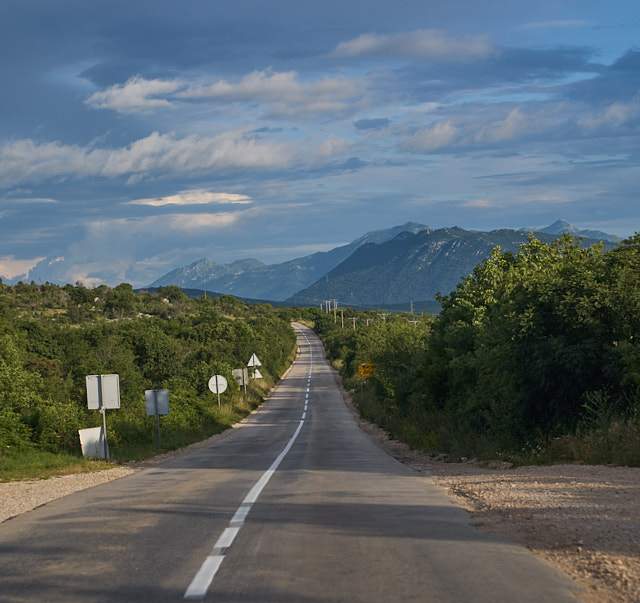
The road ahead for the fearless driver soon brings the mountains with narrow roads and darkness as you go from Bosnia and Herzegovina to the Balkan country of Montenegro. Leica M10-R with Leica 50mm Summilux-M ASPH f/1.4 BC. © Thorsten Overgaard.
We all rememeber Sarajevo?
Sarajevo (in Bosnia and Herzegovina) has a certain ring to it. It's a place I've heard mentioned so many times due to the 'Bosnian War' (1992-1995) that you sort of think there is still a war there. Yet I had no idea about the place. From where we were, it was easy to convince ourselves that a detour of a few hours would be worth it.
Arriving late at night, I would say we were a bit underwhelmed. The rain and darkness didn't help, and our hotel was not as nice and exotic as they had presumed in the description. We took a walk in the dark and rainy city before midnight and then decided to take another look in the morning.
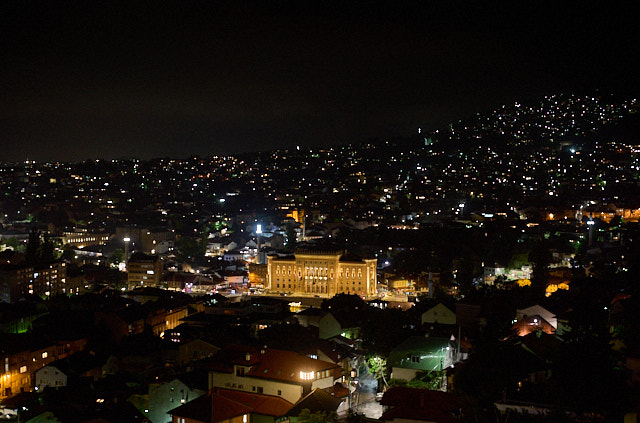
Arriving to Sarajevo at night. Feels like arriving in a valley. Leica M10-R with Leica 50mm Summilux-M ASPH f/1.4 BC. © Thorsten Overgaard.

Rainy night in Sarajevo. It rains quite a lot in Sarajevo. Leica M10-R with Leica 50mm Summilux-M ASPH f/1.4 BC. © Thorsten Overgaard.
To be honest, Sarajevo was not that exciting. We headed out of town before lunch the next day, having done a quick excursion for a few hours in the morning.
With my limited knowledge, as I had never been there but felt I had heard the name Sarajevo so much, I thought it was a big, exciting city with signs of ancient history, battles, and rebuilding after the war ended just before Christmas in 1995. When I read up on it, I learned that it is, in fact, what it feels like—a small city with just 275,000 people.
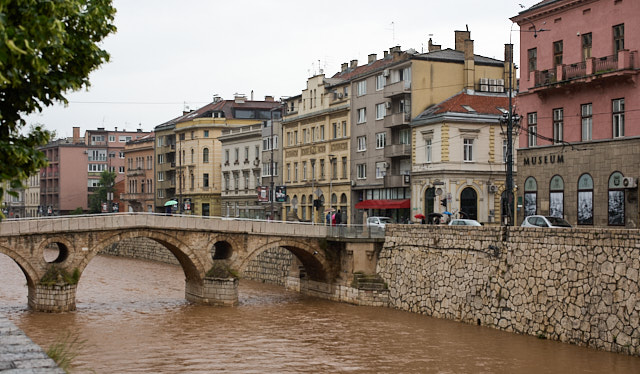
The city of Sarajevo seen across river Miljacka. Leica M10-R with Leica 50mm Summilux-M ASPH f/1.4 BC. © Thorsten Overgaard.
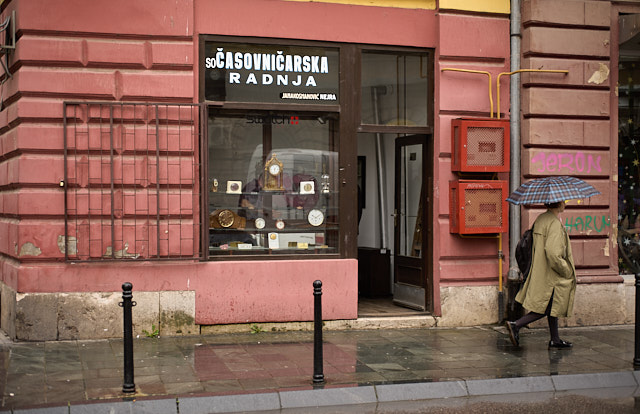
A watch store in Sarajevo. Leica M10-R with Leica 50mm Summilux-M ASPH f/1.4 BC. © Thorsten Overgaard.
Here is what you need to know: They make good coffee, and the people are very honest. Most of them walk with an umbrella, which seemed strange—until we learned that in Sarajevo, rain comes suddenly and usually at the most inconvenient moments. When you think it has stopped raining, it starts again.
I wish I could say more, and probably I could if I had stayed longer. I just didn't feel like it. I don't know if it is fair to say that time had stood still since 1995, but I didn't feel like we would be missing out on anything by getting in the car and moving on.
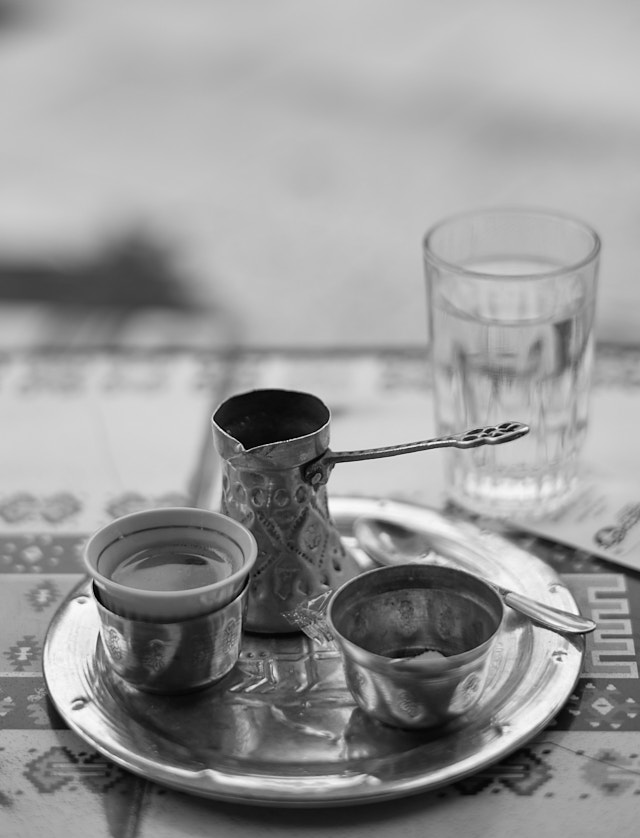
Coffee in Sarajevo. Leica M10-R with Leica 50mm Summilux-M ASPH f/1.4 BC. © Thorsten Overgaard.
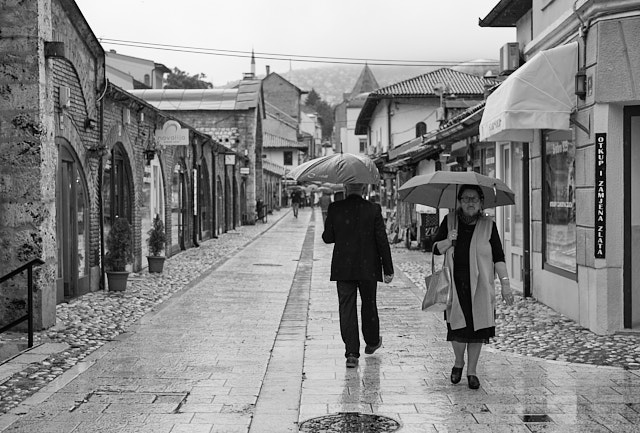
Sarajevo. Leica M10-R with Leica 50mm Summilux-M ASPH f/1.4 BC. © Thorsten Overgaard.
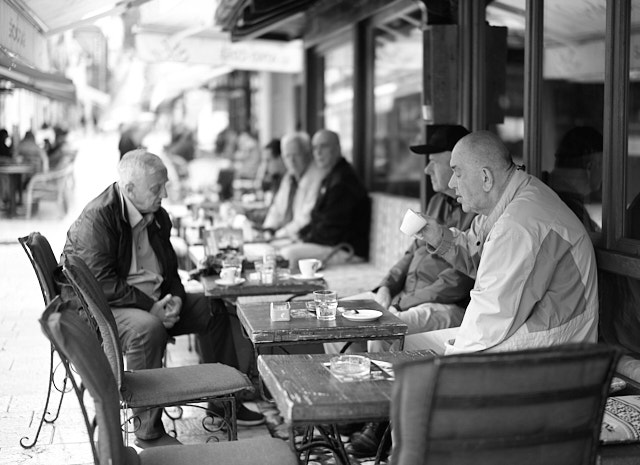
Locals having coffee in the tourist area of Sarajevo. Leica M10-R with Leica 50mm Summilux-M ASPH f/1.4 BC. © Thorsten Overgaard.
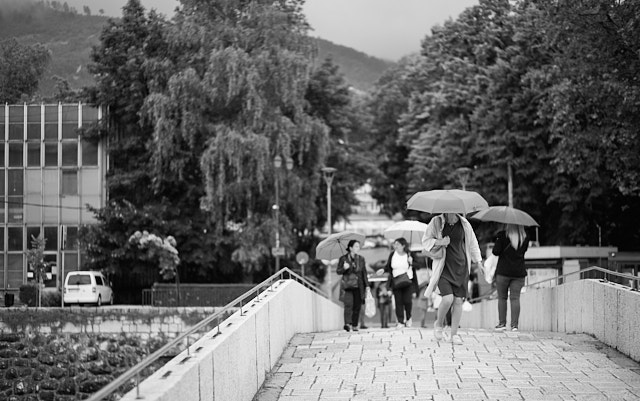
Sarajevo. Leica M10-R with Leica 50mm Summilux-M ASPH f/1.4 BC. © Thorsten Overgaard.
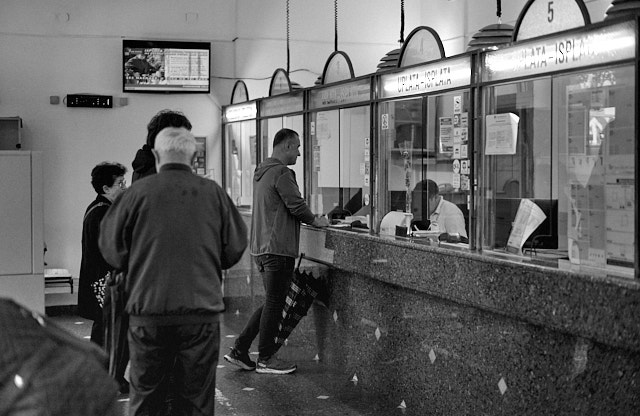
Post office in Sarajevo. Leica M10-R with Leica 50mm Summilux-M ASPH f/1.4 BC. © Thorsten Overgaard.
It started in a nice way
On our way to Sarajevo, we stopped for food and to see what was happening, because something was, at Suncana Reka outside of Banja Kovilja?a, about 3-4 hours before we would arrive in Sarajevo.
A couple of hours in what felt like a time pocket of a childhood summer trip in a parallel universe. Which there are a lot of in the Balkans, by the way.
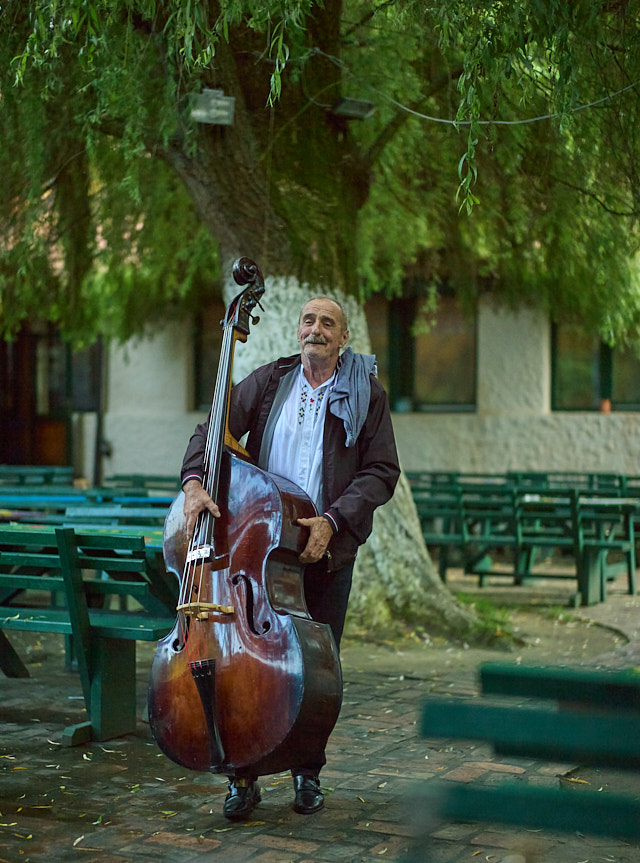
On the road to Sarajevo we stopped at
an outdoor space on the river Drina, just outside of Banja Koviljaca. Outdoor dinner place with music, tourists, goats, a small church, hostel, hotel and more. Leica M10-R with Leica 50mm Summilux-M ASPH f/1.4 BC. © Thorsten Overgaard.
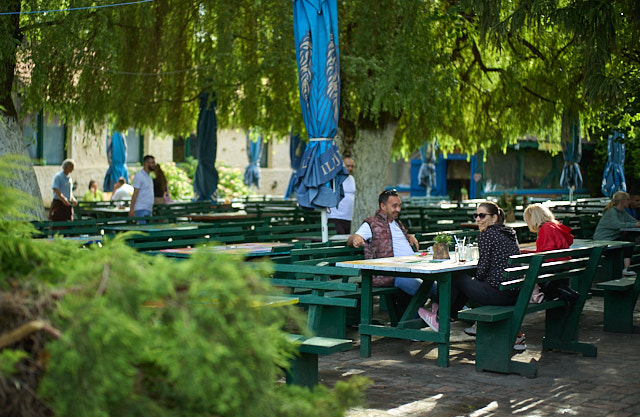
Leica M10-R with Leica 50mm Summilux-M ASPH f/1.4 BC. © Thorsten Overgaard.
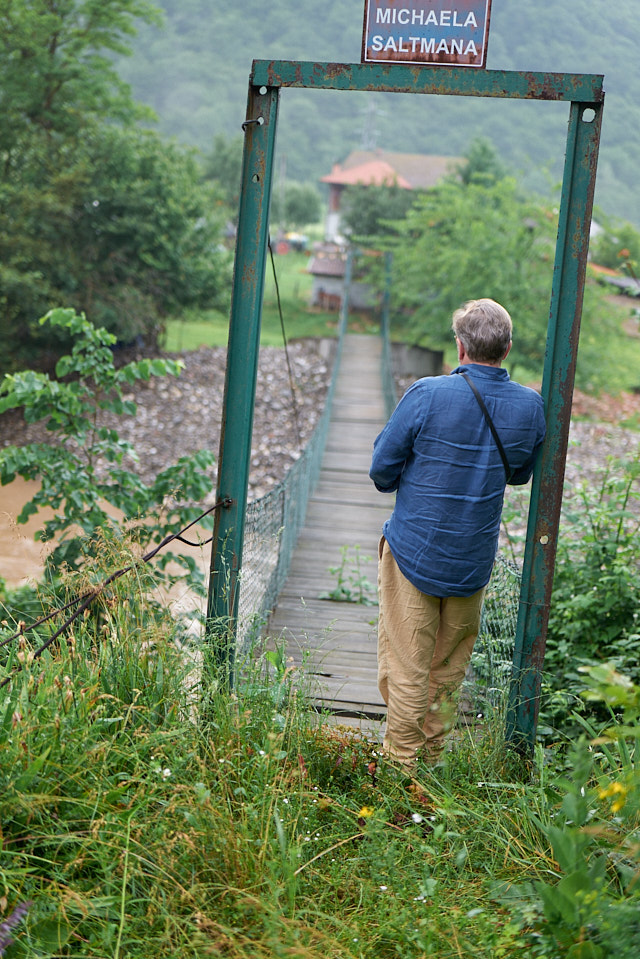 Also this on the way: A bit of local infrastructure some time before we arrived in Sarajevo. A few houses, with their own little bridge over the river Drina. Leica M10-R with Leica 50mm Summilux-M ASPH f/1.4 BC. Photo by Layla Bego.
Also this on the way: A bit of local infrastructure some time before we arrived in Sarajevo. A few houses, with their own little bridge over the river Drina. Leica M10-R with Leica 50mm Summilux-M ASPH f/1.4 BC. Photo by Layla Bego.
Now it gets exciting: The Old Bridge in Mostar
Next stop, we decided, should be Mostar, which was a few hours off our route. I had bought some really cool postcards in Sarajevo that had a beautiful, dramatic rendition of the Old Bridge in Mostar. I don't know why they sold them in Sarajevo, probably because they didn't have something as interesting like that themselves. So, go we must.
A few hours later, we found ourselves drinking coffee on a rooftop café above the famous bridge that was built by the Ottomans in 1557 as an architectural marvel, uniting the people from both sides of the Neretva River.
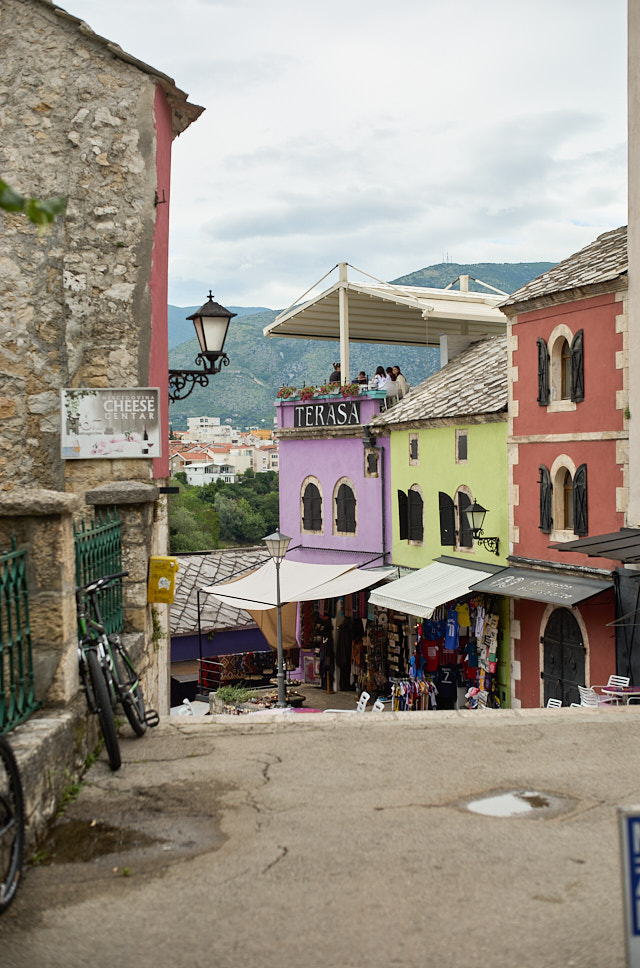
The city of Mostar. Leica M10-R with Leica 50mm Summilux-M ASPH f/1.4 BC. © Thorsten Overgaard.

The view from our choice of coffee place: The famous UNESCO-designated Old Bridge in Mostar, located in the Old City of Mostar, Bosnia and Herzegovina, dates back to 1557 as an architectural marvel built by the Ottomans. However, it collapsed in 1993 during the war. The discussions regarding who caused its collapse and how it happened have yet to provide a definitive answer. Nonetheless, the bridge was rebuilt, and in the aftermath, it has been recognized as a symbol of the reunion of people on both sides - as it also was when it was originally built. Leica M10-R with Leica 50mm Summilux-M ASPH f/1.4 BC. © Thorsten Overgaard.
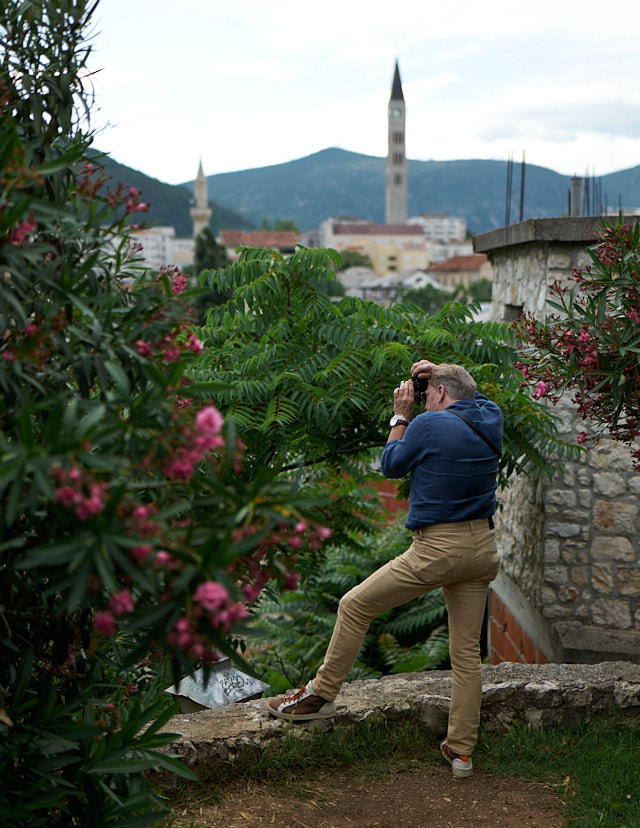
Thorsten Overgaard in Mostar. Photo by Layla Bego. Leica SL2 with Leica 50mm Summicron-SL f/2.0.
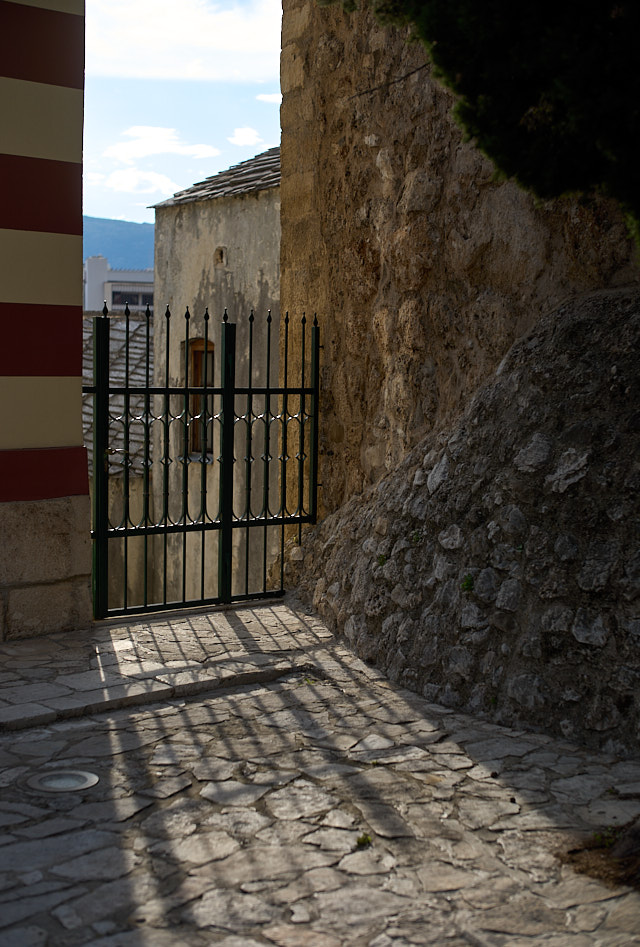
Unsurprisingly, you don't need any famous or must-see location to take photos. Often, light is the key ingredient, as seen in this corner of a courtyard of the ancient Karadoz-Begova home, now the building of the tourist agency in Mostar. Leica M10-R with Leica 50mm Summilux-M ASPH f/1.4 BC. © Thorsten Overgaard.

A wine bar by the stairs of the Old Bridge in Mostar took the prize for being not touristy, but instead an oasis with floating jazz music and guests enjoying the sunset and a trio of wines for 10 euros—while watching people coming from the long tourist trail of the city (a cobblestone street with tourist shops and restaurants). Leica M10-R with Leica 50mm Summilux-M ASPH f/1.4 BC. © Thorsten Overgaard.
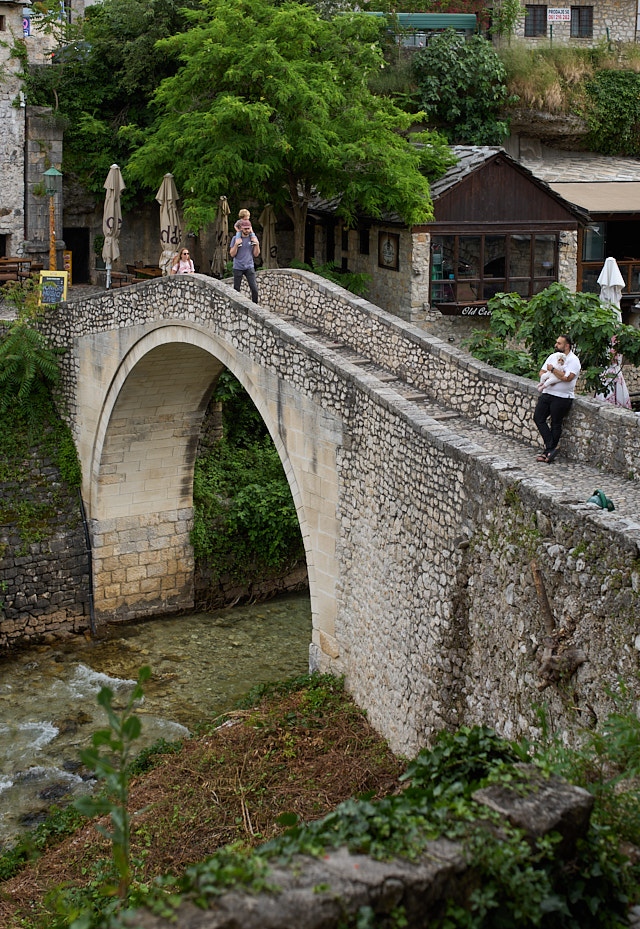
An even more beautiful bridge, in my opinion, hidden away behind some houses, is the smaller Kriva ?uprija Bridge, with no people and a calm, quiet atmosphere. Leica M10-R with Leica 50mm Summilux-M ASPH f/1.4 BC. © Thorsten Overgaard.
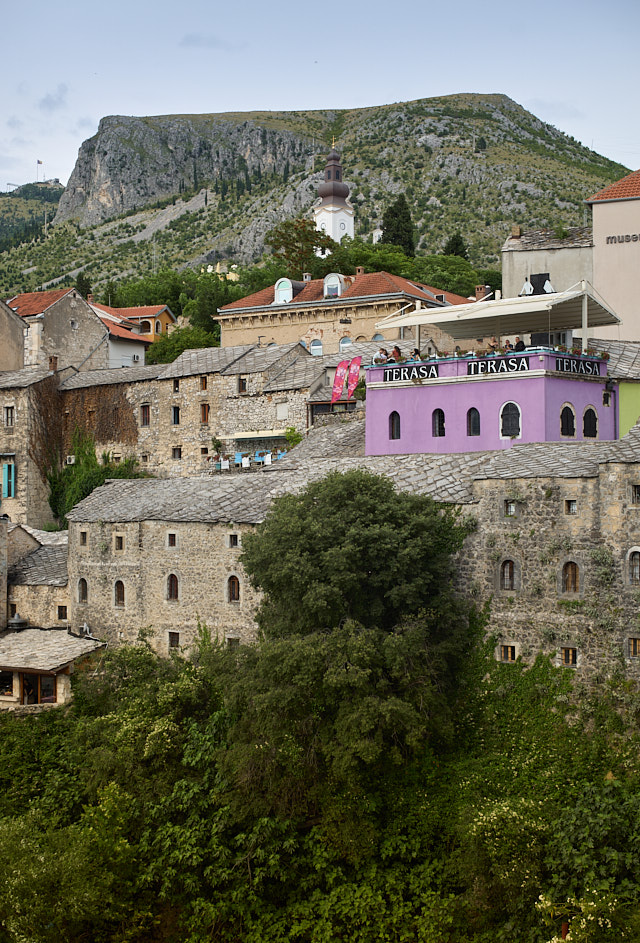
Mostar. Leica M10-R with Leica 50mm Summilux-M ASPH f/1.4 BC. © Thorsten Overgaard.
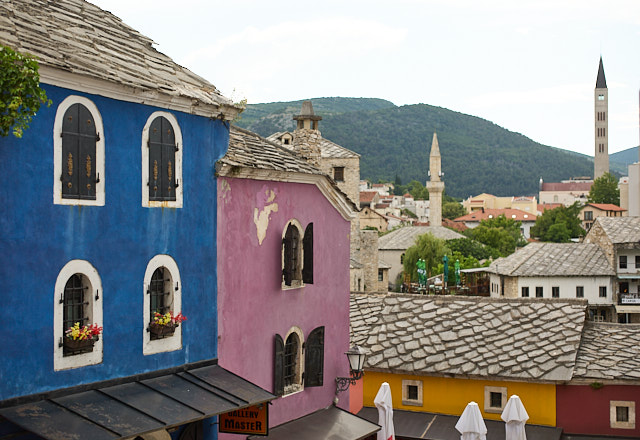
Mostar. Leica M10-R with Leica 50mm Summilux-M ASPH f/1.4 BC. © Thorsten Overgaard.
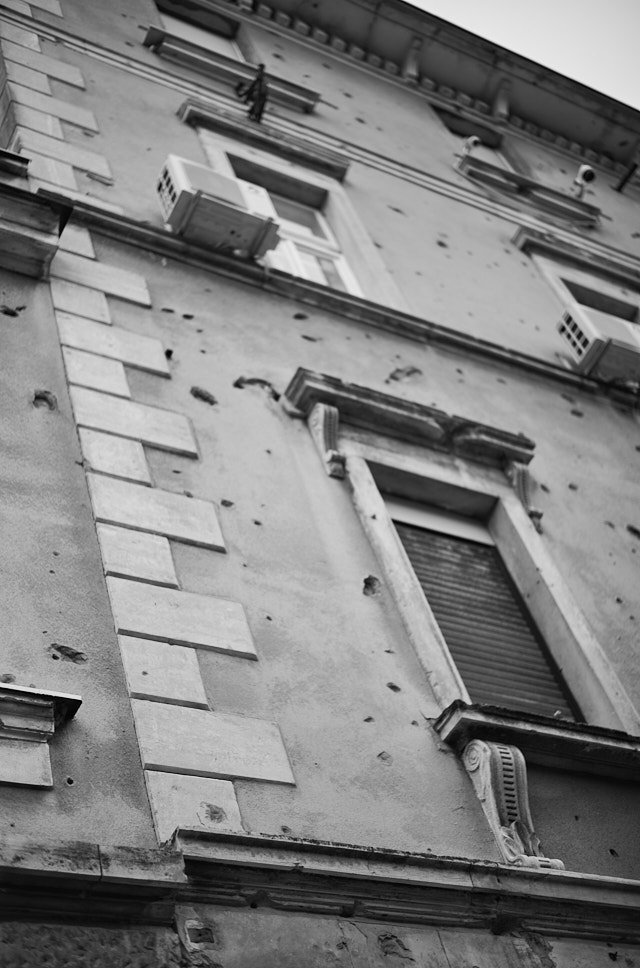
In Mostar, there are signs of the 'Siege of Mostar' that was fought during the 'Bosnian War', first in 1992 and then again later in 1993 to 1994. The Bosnian War ended on December 14, 1995. Leica M10-R with Leica 50mm Summilux-M ASPH f/1.4 BC. © Thorsten Overgaard.
Mountain Roads: Drive as Fast as You Want
There is quite a bit of tourism in Mostar. We walked the streets, took photos, and then headed back to the car to continue on the planned route.
On many of the narrow roads, the speed limit is unmarked at 80 km/h ... which is science fiction. Now and then, a sign proclaims that you must reduce the speed to 40 km/h or 20 km/h, often if there is a small town. But the rest of the time, you may go as fast as you like, which implies that you will fly off the mountain before you manage to break the speed limit.
Mountain driving is easy in daylight, darkness, rain, or snow as long as you stay on the road, don’t try your luck, and stay away from reading text messages on the phone or looking for candy you lost on the floor.
I found that whenever I looked at some impressive landscape, mountainside, or river deep down below, when I looked back at the road, I was surprised! Every time, the road would have taken a new, surprising direction.
Keeping your eyes on the road is advisable.
Montenegro is a Paradise
I shall return with more from the Balkans, Croatia, Montenegro, and all, later. The cities and the coastline are where Game of Thrones found their castles for the television series. These are real castles and cities, and a maze. But as always, the interesting things are found in between the obvious places.
More on that later.
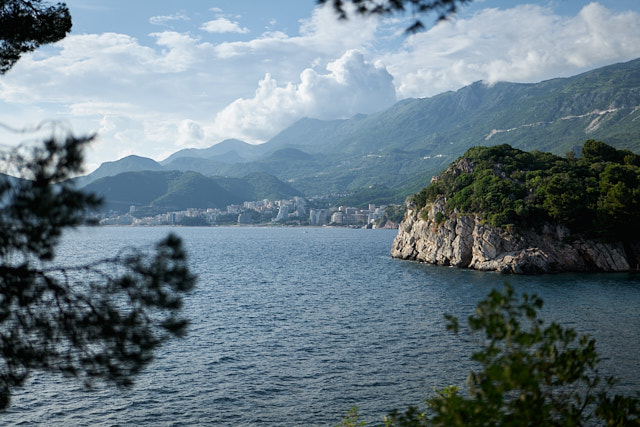
Pržno in Budva, Montenegro. Leica SL2 with Leica 50mm Summicron-SL f/2.0. © Thorsten Overgaard.
Balkans?
The Balkans (Rumelia in the 19th century; the European provinces of the Ottoman Empire 14th - 20th century) comprise the countries of Albania, Bulgaria, Greece, Kosovo, the European part of Turkey, and the countries previously known as Yugoslavia (now Bosnia and Herzegovina, Croatia, Macedonia, Montenegro, Serbia, and Slovenia).
It is not easy to grasp, with countries now divided by borders, and some being members of the European Community while others are not, but using the Euro as their national currency (Montenegro), and some treating their borders as if they are part of the EC (Croatia).
Due to the Balkan War, some of these countries may have entered the space of oblivion in the minds of many of us. Some don't even know the war has been over for nearly 30 years, and some may think it is countries far away (we often think that wars are on the other side of the globe, or at least far enough away that it's somebody else's problem).
How do the Balkan people look? If we take the 24-time tennis world champion (and Olympic Gold Medal winner 2024) Novak Djokovic, who is a 6'2" tall Serbian born in Belgrade, we get somewhere in the description of the Balkans. The people in the area are tall (which is why quite a few from the Balkans are NBA players), healthy, and strong. They are very proud and straightforward people, and if you get served in a Balkan restaurant, you will receive very good service without any BS. What you see is what you get.
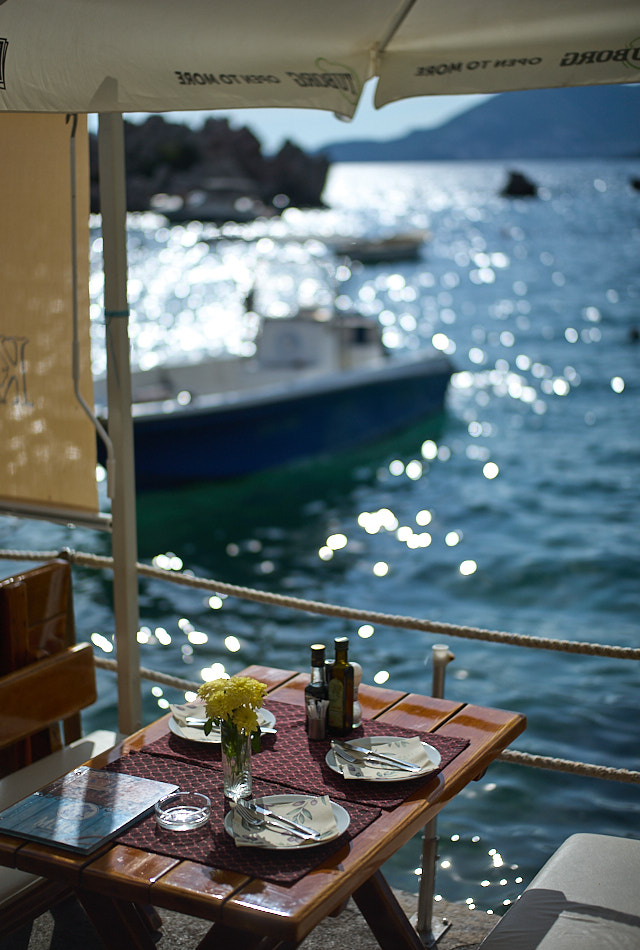
Breakfast in Perast, Montenegro. Leica M10-R with Leica 50mm Siummilux-M ASPH f/1.4 BC. © Thorsten Overgaard.
Travel advice
If you drive, start your route from (somewhere and go via) Venice and then drive through Slovenia and along the coast of Croatia to end up in Montenegro. This would be the most beautiful drive of a lifetime. Estimated drive time is 11 hours, but you will want to set aside some days. The amount of green nature, freshness, water, views, history, and all is breathtaking.
More to come
Bon voyage with it all. Sign up for the newsletter to stay in the know. As always, feel free to email me with suggestions, questions and ideas. And hope to see you in a workshop one day soon.
/Thorsten Overgaard
| |
|
|
|
|
| |
 |
|
| |
|
|
|
|
| |
"Photography is simple"
Thorsten Overgaard is one of the best to explain in simple terms how cameras works, and how to get excellent results.
Be competent. Buy and study this easy-to-use video class that explains how to get focus right, what sharpness is, how to get the exposure and the colors right, and more ...
"Easy to apply, photography finally told so everyone can become an expert user"
Normal price $498.00
Explained by Thorsten Overgaard by using Leica Q2, Leica SL2, Leica M11, Leica M10 Monochrom, 35mm film cameras, Leica Digilux 2 and more. |
|
Thorsten Overgaard's
"Camera Excellence Class"
For Computer,
iPad, Apple TV and smartphone.
Normal price $498.00
Only $198.00

Save $300.00
USE CODE: "COXY66" ON CHECKOUT
Brand new. Order now. Instant Delivery.
100% satisfaction or money back.
More info
Item #1847-0323
Released April 2023
|
|
| |
|
|
|
|
![]()
